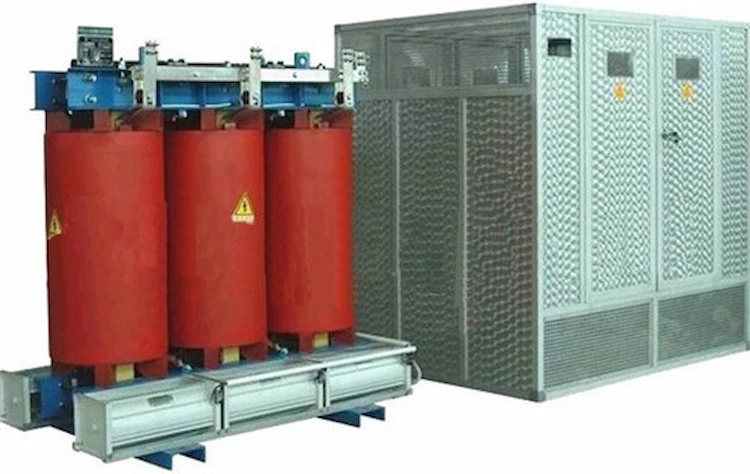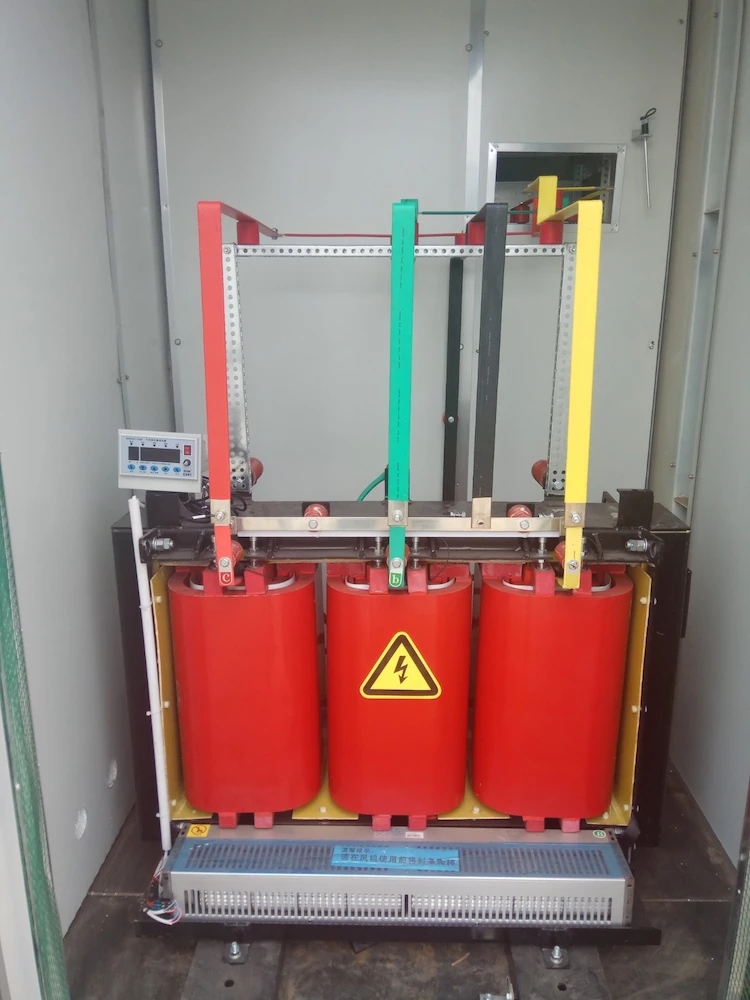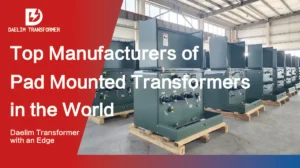
How to Choose Pad Mounted Transformer?
Table of Contents Selecting the right pad-mounted transformer requires careful consideration of several critical factors, as these ground-mounted distribution transformers play a vital role
ELECTRIC, WITH AN EDGE

Autotransformers and isolation transformers are two different forms of transformers. They have the same and differences.
Kind of transformers, they all use a kind of energy conversion between the alternating magnetic field and the alternating current in the coil to transform Voltage.
In other words, the working principle of autotransformer and isolation transformer is the same.
Today we will specifically talk about the difference between autotransformer and isolation transformer.
The primary coil and the secondary coil of the autotransformer are a common coil.
The secondary voltage output uses a voltage generated by the self-inductance of the coil.
The output voltage is based on the number of turns of the common output part of the coil and the total coil It is calculated by the ratio of the number of turns.
It is the same as the calculation of the isolation transformer. In other words, if it is a three-phase autotransformer, there is only one coil per phase, and there are three coils in total.
The primary and secondary coils of the isolation transformer are Independent of each other.
The voltage output of the secondary side is generated by the mutual inductance between the coils.
The output voltage is also calculated according to the turns ratio of the coil between the primary and secondary sides.
Therefore, if it is a three-phase isolation transformer, It has six coils, and two coils on each phase are combined into a whole in the form of inner and outer sets.
The primary coil and the secondary coil on each phase of the autotransformer are actually one coil, and its connection methods are “Y” and “△” connections.
“Y” means that the common points of the primary and secondary coils are connected together as a common neutral point, which is the zero line we often talk about.
The tap drawn from the middle of each phase coil is the output terminal of the transformer.
The other end of the coil is the input end of the transformer.
This kind of autotransformer can actually output two different voltages. That is, a transformer with a “Y” connection can output two different voltages.
Just as we often talk about three-phase 380V and single-phase 220V. The voltage between the live wire and the live wire is the line voltage, and the voltage between the live wire and the neutral wire is the phase voltage.
The line voltage is 1.732 times the phase voltage. The output voltage is different due to the different connection points.
This is a characteristic of autotransformer, and it is also the characteristic of “Y” connection transformer.
Autotransformer also has “△” connection method. It is also called Yanbian triangle. But in autotransformer There is often only one connection method in the transformer.
Since the primary and secondary coils of the isolation transformer are independent of each other, it allows the primary and secondary coils to be connected in the same or different ways.
For example, the primary coil is “△”, while the secondary coil is “Y” or “△”, the primary coil is “Y”, and the secondary coil is “△” or “Y”, and depending on the phase of the coil, it can be Extend dozens of different connection methods.
Of course, whether it is an autotransformer or an isolation transformer, the “△” connection method does not have a neutral wire.
If the secondary coil of the isolation transformer is “△”, then it can only output A voltage for the load. It is not as convenient as the “Y” transformer connection method.
It is generally used for resistive or inductive three-phase balanced loads that do not require a neutral wire.
In the operation of an autotransformer, the input side and the output side are both electrically and magnetically connected.
Why do you say this is because the output voltage of the common part is the induced voltage generated by the self-inductance of the coil.
It is used in the coil In the alternating magnetic field, the induced current is used to achieve the induced voltage.
On the other hand, since the primary coil and the secondary coil of the autotransformer are themselves a coil, the input and output sides are directly connected together during operation, but the output voltage has changed.
Therefore, there is electricity in the operation of the autotransformer.
There is also a magnetic connection. In a three-phase four-wire power grid, if the human body accidentally touches any non-neutral output terminal of the autotransformer, there is a danger of electric shock.
In the operation of the isolation transformer, because the primary coil and the secondary coil are not connected, but independent of each other, the isolation transformer is only connected magnetically and not electrically connected.
During operation, the human body accidentally touches the output of the isolation transformer When the single terminal of the isolation transformer is generally not dangerous, it is because the input and output of the isolation transformer are not isolated from each other and cannot communicate with each other.
It actually plays a role of isolation. Therefore, the isolation transformer has another name-safety transformer. (It can only be safer to the human body than the autotransformer to a certain extent

The fourth item is a more professional parameter. The unique structure of the two transformers is related.
The primary and secondary coils of the autotransformer are shared, so the radial thickness of the coil is small, so the impedance voltage is low, and the primary and secondary sides of the isolation transformer are mutually connected.
Independent, the number of layers of the coil is large, the radial thickness is large, and the impedance voltage is higher than that of an autotransformer.
Due to the difference in impedance voltage, the short-circuit current of the coils of the two transformers when the secondary side is short-circuited is very different.
The short-circuit current in the autotransformer is much larger than the short-circuit current in the isolation transformer.
The damage to the coil by this current is also different in the two transformers.
That is, when the autotransformer and isolation transformer of the same capacity have a secondary short-circuit, the autotransformer coil will withstand a much larger short-circuit current than the isolation transformer. .
Therefore, the autotransformer’s ability to resist short-circuits is worse than that of the isolation transformer.
The damage rate in the secondary side short-circuit fault is high.
At the same time, the autotransformer has a small radial thickness and the leakage magnetic field during operation is smaller than the isolation transformer, so the iron core
The requirement is lower than the isolation transformer, in other words, the same kind of sheet material, the magnetic flux density of the iron core in the autotransformer can be higher than the isolation transformer.
The primary and secondary sides of the autotransformer are directly connected, and the interference in the primary side grid will be directly added to the load of the transformer.
At the same time, the interference generated by the load will also be added to the primary side grid to interfere with other loads in the same grid. Equipment.
It is not conducive to the optimization of the power quality of the power grid.
The isolation transformer is different.
The interference in the primary side grid is partially attenuated or isolated due to the characteristics of the coil itself that hinders the change of the alternating current.
Therefore, the interference added to the secondary side load is less than that of the autotransformer.
In the same way, the interference generated by the secondary side load will also be attenuated or partially isolated by the transformer, which will not cause more and more interference in the public grid, which has played a role in purifying the grid.
The effect. That is, the effect of isolating the interference. The size of this effect is related to the frequency of the interference.
The size and cost are different.
From the first item above, it can be seen that the autotransformer is smaller in volume than the isolation transformer.
The weight is also light. The corresponding manufacturing cost is lower than the isolation transformer of the same capacity.
At the same time, as mentioned in the fourth item, the requirement for the core of the autotransformer is lower than that of the isolation transformer, so for the two transformers of the same capacity, the core section of the autotransformer can be smaller than that of the isolation transformer.
In terms of utilization, the autotransformer is higher than the isolation transformer.
Since the autotransformer does not have the core consumables or the wire consumables than the isolation transformer, the manufacturing cost of the autotransformer transformer is lower than that of the isolation transformer, and the volume is lower.
The weight is smaller than the isolation transformer, and the transportation is also convenient.
The isolation transformer is used in some occasions where the safety level is high and the quality of the power supply waveform is high.

Table of Contents Selecting the right pad-mounted transformer requires careful consideration of several critical factors, as these ground-mounted distribution transformers play a vital role

The primary function of the pad mounted transformer is to serve as a critical distribution transformer that steps down higher primary voltage from utility distribution

A pad mounted transformer operates through electromagnetic induction, serving as a crucial distribution component that converts high voltage electricity to lower, usable voltages for residential

When looking for the best pad-mounted transformer manufacturer, it’s important to find industry leaders known for reliability and innovative solutions. Pad-mounted transformers are essential in
After filling in the contact information, you can download the PDF.